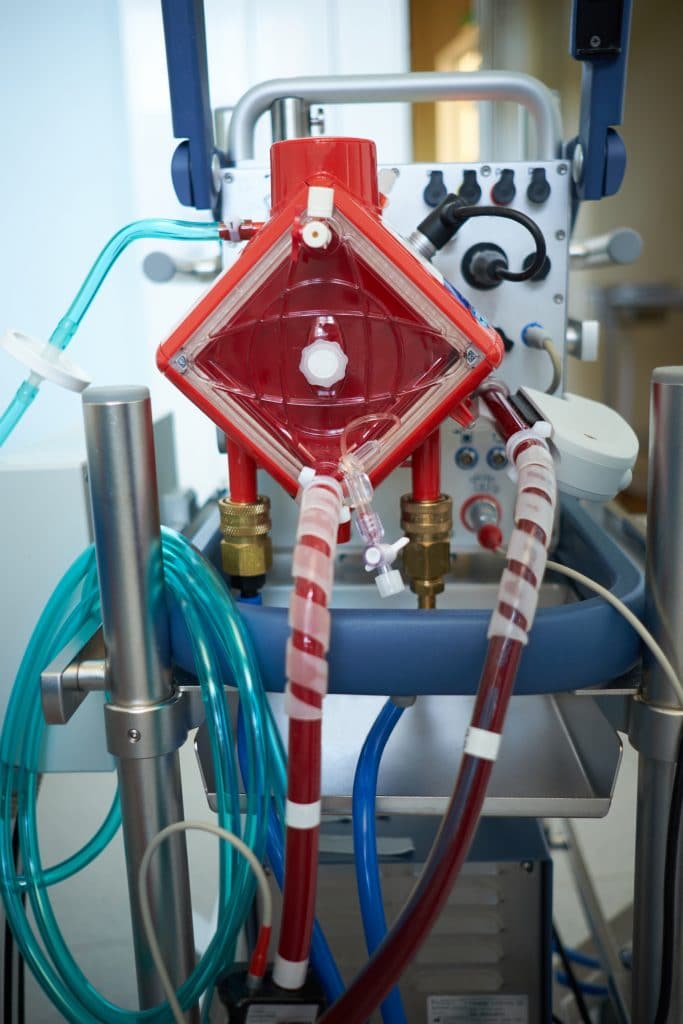Tethered Liquid Perfluorocarbon Coating for 72 Hour Heparin-Free Extracorporeal Life Support

Coagulopathic complications during extracorporeal life support (ECLS) result from two parallel processes: 1) foreign surface contact and shear stress during blood circulation and 2) administration of anticoagulant drugs to prevent circuit thrombosis. To address these problems, biocompatible surfaces are developed to prevent foreign surface-induced coagulopathy, reducing or eliminating the need for anticoagulants. Tethered liquid perfluorocarbon (TLP) is a nonadhesive coating that prevents adsorption of plasma proteins and thrombus deposition. We examined application of TLP to complete ECLS circuits (membranes, tubing, pumps, and catheters) during 72 hours of ECLS in healthy swine (n = 5/group). We compared TLP-coated circuits used without systemic anticoagulation to standard of care: heparin-coated circuits with continuous heparin infusion. Coagulopathic complications, device performance, and systemic effects were assessed. We hypothesized that TLP reduces circuit thrombosis and iatrogenic bleeding, without impeding gas exchange performance or causing untoward effects. No difference in bleeding or thrombotic complication rate was observed; however, circuit occlusion occurred in both groups (TLP = 2/5; CTRL = 1/5). TLP required elevated sweep gas rate to maintain normocapnia during ECLS versus CTRL (10–20 vs. 5 L/min; p = 0.047), suggesting impaired gas exchange. Thrombus deposition and protein adhesion on explanted membranes were comparable, and TLP did not preserve platelet or blood cell counts relative to controls. We conclude that neither TLP nor standard of care is an efficacious solution to prevent coagulation disturbances during ECLS. Further testing of promising biomaterials for ECLS utilizing the model outlined here is warranted.
